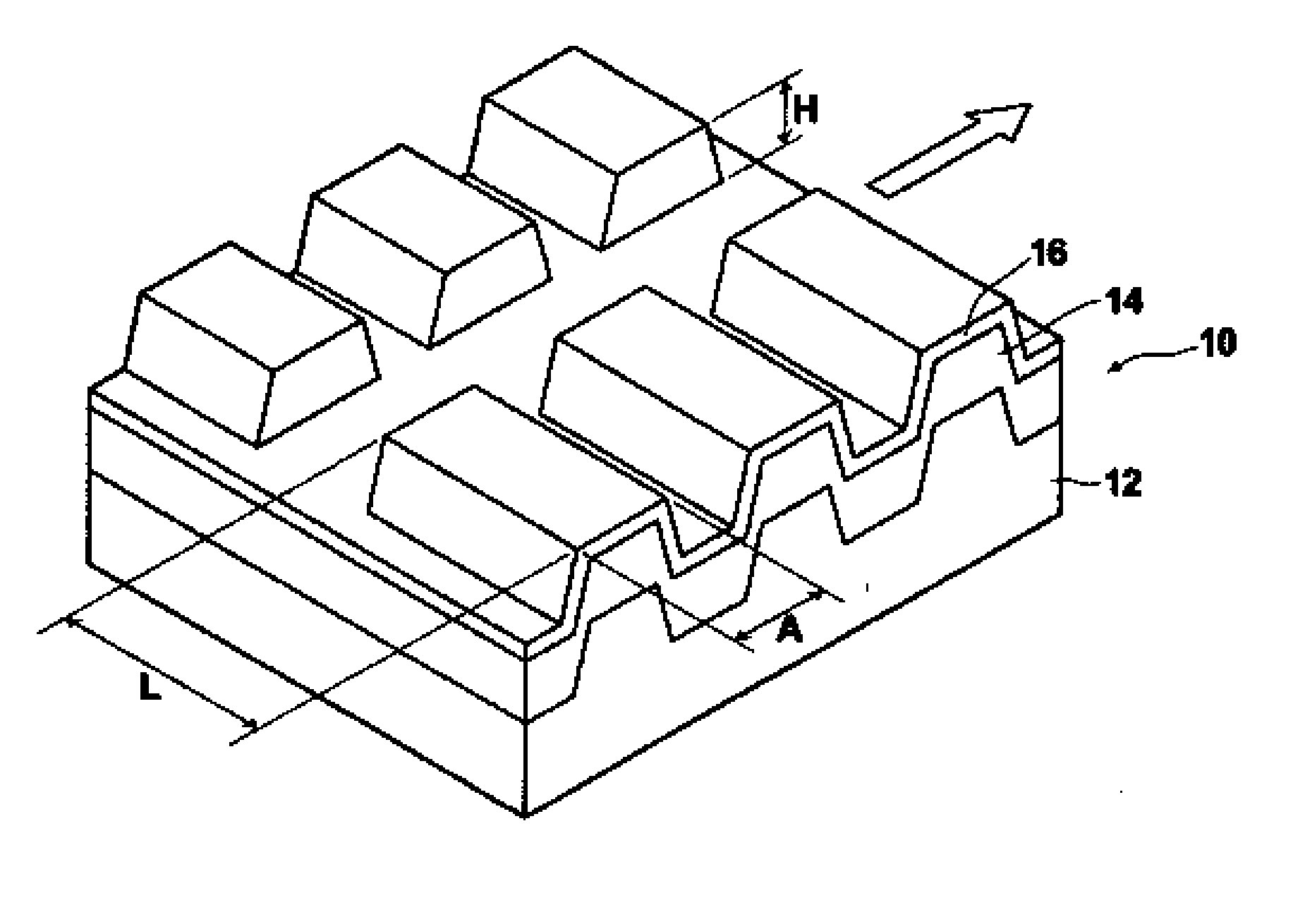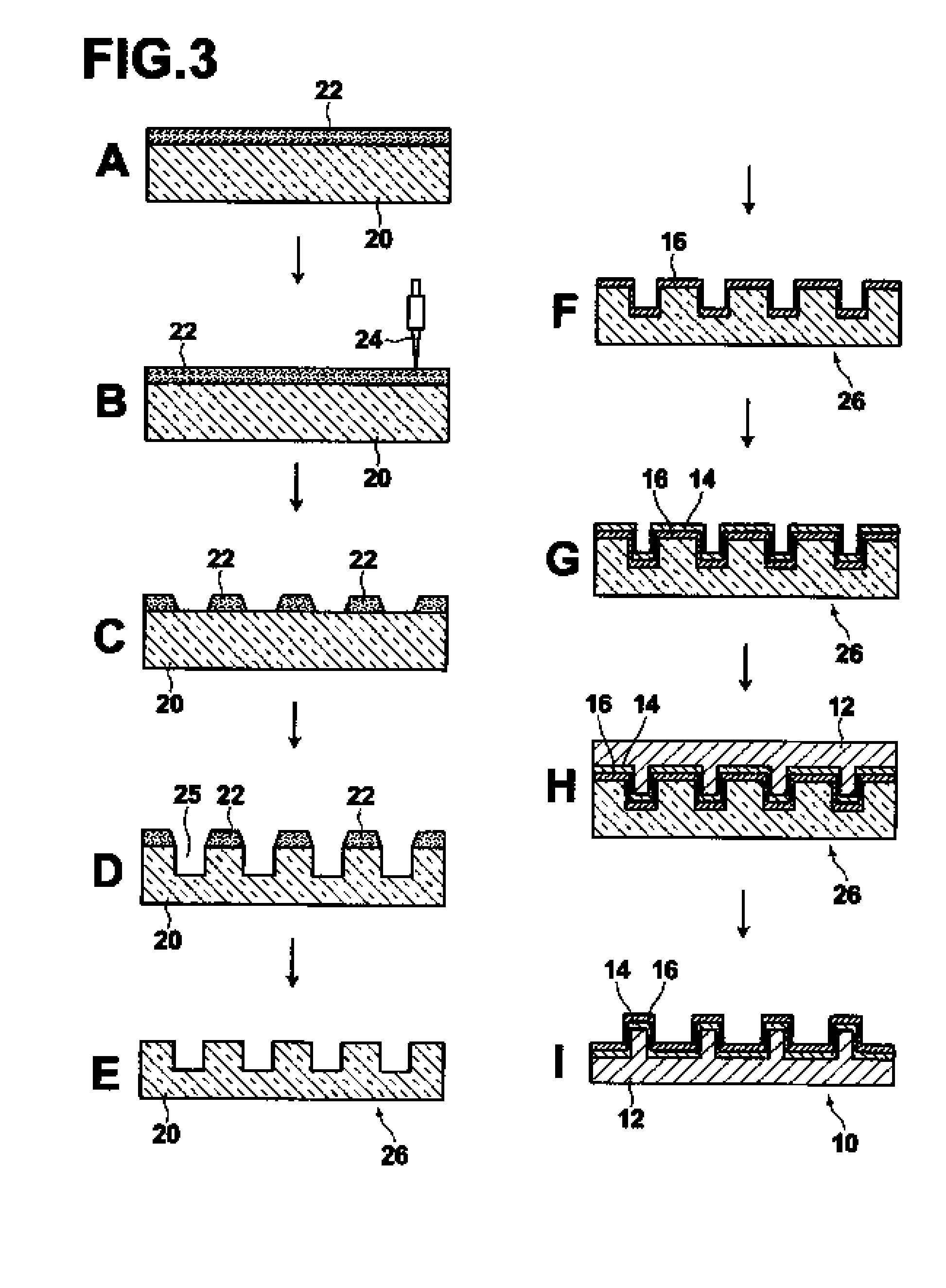Mold and method for producing the same
a mold and mold technology, applied in the field of mold and mold production method, can solve the problems of difficulty in releasing duplicated plates, mold chipping, and lowering the precision of pattern shape, so as to reduce the concentration of stress, improve the releasability of duplicated plates, and reduce the concentration of duplicated plates
- Summary
- Abstract
- Description
- Claims
- Application Information
AI Technical Summary
Benefits of technology
Problems solved by technology
Method used
Image
Examples
second embodiment
of Method for Producing Master Carrier
[0091]Next, a method for producing a master carrier according to another embodiment is described based on FIG. 5. This production method differs from the method described above with reference to
[0092]FIG. 3 in that, after the release layer has been formed and before the master substrate (metal substrate) is formed, a filling layer is formed to fill the groove portions of the groove-ridge pattern of the Si original plate. That is, this method includes the same steps as the steps shown at “A” to “G” in FIG. 3 of the above-described method. It should be noted that the same components as those in the above-described embodiment are denoted by the same reference numerals, and explanations thereof are omitted unless otherwise required.
[0093]FIG. 5 shows at “A” a schematic sectional view of the Si original plate in a state where the release layer 16 and the magnetic layer 14 are formed in this order after the groove-ridge pattern has been formed on the ...
example 1
[0104]As an example of the layer structure of a mold (master carrier) for magnetic transfer, a 3 nm-thick Pt release layer and a 20 nm-thick FeCo magnetic layer were formed in this order through sputtering on the surface of a Si original plate, which had on the surface thereof a fine groove pattern having a half width of 30 nm and a height of 100 nm. Then, a 150 μm-thick Ni master substrate was formed through electroforming on the Si original plate having the two layers, the Pt release layer (3 nm) and the FeCo layer (20 nm), formed thereon to form a duplicated plate. The duplicated plate was released from the Si original plate to provide a master carrier for magnetic transfer having on the surface thereof a ridge pattern, which is a reverse pattern of the groove pattern, and including the magnetic layer and the Pt release layer formed on the surface of the reverse pattern.
example 2
[0105]As an example of the layer structure of a mold for discrete track media, a 9 nm-thick Ru release layer was formed through sputtering on the surface of the Si original plate, which had on the surface thereof a fine groove pattern having a half width of 20 nm and a height of 60 nm. Then, a 150 μm-thick Ni substrate was formed through electroforming on the Si original plate with the 9 nm-thick Ru release layer formed thereon to form a duplicated plate. The duplicated plate was released from the Si original plate to provide a mold for shape transfer having on the surface thereof a ridge pattern, which is a reverse pattern of the groove pattern, and including the Ru release layer formed on the surface of the reverse pattern.
PUM
| Property | Measurement | Unit |
|---|---|---|
| thickness | aaaaa | aaaaa |
| thickness | aaaaa | aaaaa |
| thickness | aaaaa | aaaaa |
Abstract
Description
Claims
Application Information
 Login to View More
Login to View More - R&D
- Intellectual Property
- Life Sciences
- Materials
- Tech Scout
- Unparalleled Data Quality
- Higher Quality Content
- 60% Fewer Hallucinations
Browse by: Latest US Patents, China's latest patents, Technical Efficacy Thesaurus, Application Domain, Technology Topic, Popular Technical Reports.
© 2025 PatSnap. All rights reserved.Legal|Privacy policy|Modern Slavery Act Transparency Statement|Sitemap|About US| Contact US: help@patsnap.com



